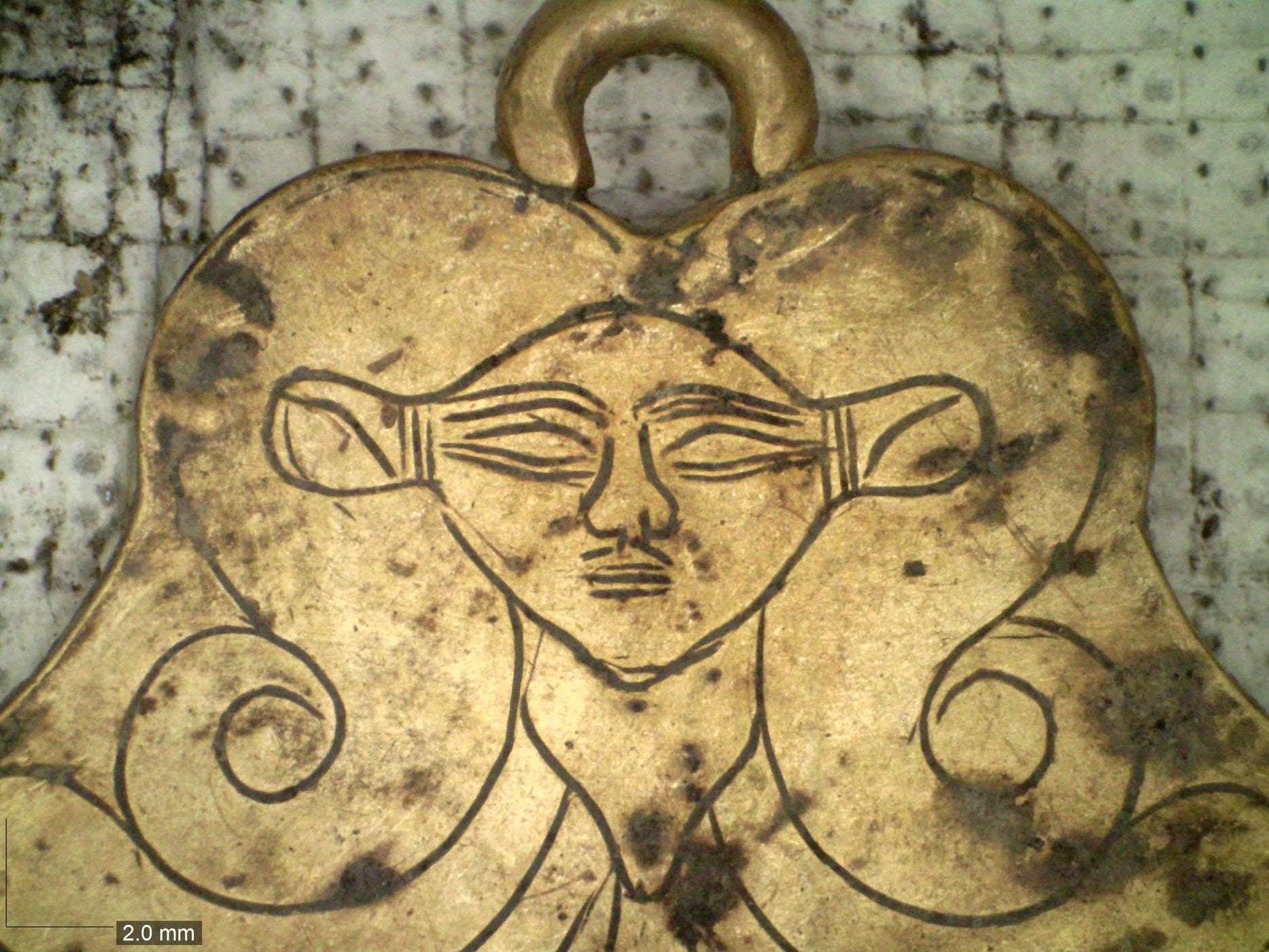Ancient royal tombs dating back more than 3,000 years uncovered in Greece
Discovery near palace featured in Homer’s Odyssey points to town having been more significant than previously thought

Two royal tombs dating back some 3,500 years and containing a hoard of revelatory ancient artefacts have been uncovered near a famed Mycenaean-era palace in southern Greece.
The country’s culture ministry announced the opulent Bronze Age tombs had been found in Pylos, near the site of King Nestor’s vast palace, which features in Homer’s Odyssey.
Researchers said the discovery could reveal new clues about Mycenaean civilisation, and could point to Pylos – situated in the Peloponnese region en route to Italy – as having been a far more major trading city than previously thought.
A ministry statement said the dome-shaped roofs of both tombs had once been lined with gold and had collapsed during antiquity, with the chambers becoming filled with so much earth and rubble that grave robbers were unable to plunder them.
They were excavated over the past 18 months by University of Cincinnati (UoC) archaeologists, who in 2015 discovered another nearby burial site known as the Griffin Warrior grave, which yielded a mass of treasure, jewellery and bronze arms buried with a man presumed to have once ruled Pylos.
Archaeological treasures of ancient Greece
Show all 9“Like with the Griffin Warrior grave, by the end of the first week we knew we had something that was really important,” said Dr Sharon Stocker, who supervised the excavation. The head of UoC’s classics department, Professor Jack Davis, added: ”It soon became clear to us that lightning had struck again.”
Recovered grave goods from the two fresh tombs included a golden amulet featuring the ancient Egyptian goddess and protectress of the dead, Hathor, highlighting Bronze Age trade and cultural links.
Another find – a golden seal ring depicting two bulls flanked by sheaves of barley – could well be a unique discovery.
“It’s an interesting scene of animal husbandry – cattle mixed with grain production. It’s the foundation of agriculture,” Prof Davis said. “As far as we know, it’s the only representation of grain in the art of Crete or Minoan civilisation.”
The wealth buried in the tomb suggests inhabitants of rare esteem.
The honeycomb-shaped burial sites are known as tholos tombs – huge, domed underground constructions reserved for Mycenaean royalty that could reach roughly 15 metres in height.
“I think these are probably people who were very sophisticated for their time,” Dr Stocker said. “They have come out of a place in history where there were few luxury items and imported goods. And all of a sudden at the time of the first tholos tombs, luxury items appear in Greece.
“You have this explosion of wealth. People are vying for power. It’s the formative years that will give rise to the Classic Age of Greece.”
And the discovery suggests Pylos may have played a larger role than previously thought.
“If you look at a map, Pylos is a remote area now. You have to cross mountains to get here. Until recently, it hasn’t even been on the tourist path,” Dr Stocker said.
“But if you’re coming by sea, the location makes more sense. It’s on the way to Italy. What we’re learning is that it’s a much more central and important place on the Bronze Age trade route.”
Additional reporting by AP
Subscribe to Independent Premium to bookmark this article
Want to bookmark your favourite articles and stories to read or reference later? Start your Independent Premium subscription today.

Join our commenting forum
Join thought-provoking conversations, follow other Independent readers and see their replies